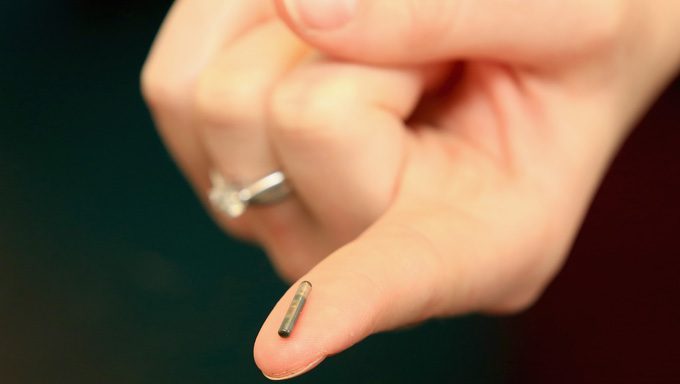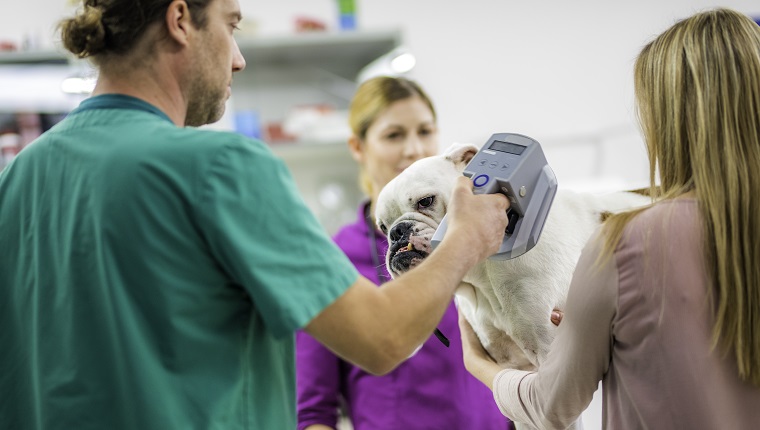August 15th is National Check The Chip Day — a day to check on your pets’ microchips and make sure they’re working and up to date.
Microchips are extremely important for keeping your pets safe. Many lost dogs and cats reunite with their pet parents thanks to their chips.
Petfinder cites a study from the American Veterinary Medical Association that claims only 22 percent of lost dogs who enter shelters are reunited with their humans. However, that percentage jumped up to over 52 percent for dogs who had microchips.
By making sure your pet’s chip has the most current info, you’ll give them a much better chance at getting home if they ever get lost. Here are a few things you should know about microchips in honor of National Check The Chip Day!
What Is A Microchip? How Does It Work?

So, what is a microchip? It’s a little transmitter — a tiny radio-wave device. It doesn’t constantly transmit data, but it will transmit data, when it is engaged by another device.
They are tiny — about the size of a grain of rice. The glass includes a cap that is a polypropylene polymer that encourages the connective tissue surrounding it to hold it in place so that it doesn’t move around once a vet inserts it.
Inside, the chip contains a tuning capacitor and an antennae coil. It doesn’t contain an energy source. It requires an external reader and energizer to access the information inside.
Chips are made of glass, and that glass material is biocompatible. It’s non toxic and doesn’t hurt the animal at all.
Overall, the chips give pet parents a sense of security, and they have reunited pets with their families across the globe.
How Do Pets Get Chipped?

Generally, a veterinarian will implant a dog’s microchip between the shoulder blades with a special hypodermic needle. It may involve some mild discomfort during the procedure, but even PETA and the AKC have stated that the benefits vastly outweigh the mild discomfort.
Some cities have even implemented legislation to require pet parents to microchip their animals.
The cost of microchipping is surprisingly low, even if you include the registration fees. Many shelters now include microchipping in their adoption fees.
In the early days of microchipping, there were many separate databases for microchip information. This sometimes caused problems as not all chip readers could pull information from all databases.
But as the microchipping trend grows, more and more universal scanners are being sent to veterinarians and shelters. Still, you must keep your pet’s microchip information updated in the manufacturer’s database.
If your dog happens to get lost, most shelters, vets, and police stations have equipment to read your dog’s chip. By making sure the information on the chip is current, you’ll give your pet the best possible chance to reunite with you quickly.
How Do You Check The Chip?
If you know the manufacturer of your pet’s microchip and you have their specific microchip ID number, you can contact the manufacturer and make sure your info in their database is current.
If you don’t know the manufacturer, but you have the microchip ID number, you can use it to search the American Animal Hospital Association’s microchip lookup tool. This can provide you with the name of the manufacturer so you can contact them.
And finally, if you don’t know your pet’s microchip ID number or the manufacturer, you can stop in at your veterinarian’s office. They’ll be able to read your pet’s chip and give you more information.
Have you checked your dog’s microchip information to make sure it’s current? Will you help spread the word for National Check The Chip Day? Then let us know in the comments below!









